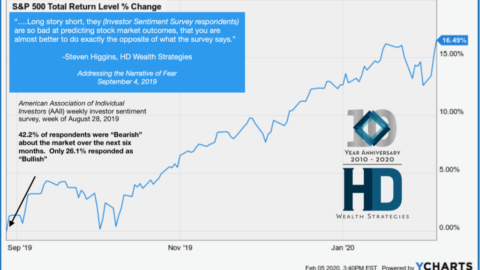Is Your Cash in the Right Spot when Rates Decline?
Riding the Rate Rollercoaster: Is your cash at risk?
Written By: Allison Schmidt, Financial Advisor, CFP®, CPA
We may be approaching a decrease in the Fed Funds rate, which is currently at its highest level in 23 years between 5.25% – 5.50%*. The dampening of inflation and recent labor market slowdown may be what the Fed needs to decide to make the first rate cut. Federal Reserve Chair, Jerome Powell spoke to Congress on July 9th and acknowledged the risk of hindering growth by waiting too long to cut rates. After Powell’s comments, Ryan Sweet, chief US economist at Oxford Economics, wrote in a note to clients that Powell’s testimony provides “further evidence that the central bank is moving closer to cutting interest rates.” He further added the research firm is “increasingly confident” the Fed will lower rates in the September meeting.
This means, among many other things, the exciting 5% money market rate we’ve been enjoying could be going down. Money markets adjust daily to short-term rates, which make them a wonderful place to park cash during an increasing interest rate environment, but not when they are falling.
What should investors do? They could buy longer term fixed income securities, like CDs, short-term corporate, municipal, or treasury bonds, etc. These securities lock in the interest rate for a longer period.But there is a challenge: we have an inverted yield curve, which means that short-term bonds pay more than long-term bonds. For example, the current 10-year treasury rate is 4.28%*, while the current money market rate is 5%^. This may tempt investors to stick with the money market rate until it drops. But this may not be wise.
Let’s look at a historical example from the 1980s with two investors, Susan and Cheryl.
The federal funds rate peaked at an all-time high in 1981 at 20%. A 10-year treasury bond at that same time reached an all-time high of 15.84%. This was an inverted yield curve like today. Two investors Susan & Cheryl were faced with a decision. Susan, opted for the higher overnight rate (20%) to avoid the 4.16% haircut in yield compared to the longer 10-year Treasury bond (15.84%). Cheryl, on the hand, opted for the lower rate for longer (15.84% for 10 years)*.
Here’s what happened…. Cheryl earned less than Susan for the first 2 years, but then earned almost 50% more than Susan over the 10 years. We assume Cheryl kept the bond until maturity, so we don’t count the increase in principal value along the way, but Cheryl could have sold the bond earlier for a profit. (Stay tuned for our next blog post where Steve talks about the pricing of bonds in this environment as well.)
Will this happen again? Not exactly. The rates are much lower now than in 1981, so the change won’t be as dramatic. But I do think that the Fed will cut rates at some point, and when that happens, money market returns will go down. I don’t know if it will be September, later this year, or next year, but it seems that the next big move (1%+) in rates will be downward. Historically, each time this has happened, buying longer term fixed income securities has paid off for investors.
Cash is important. It’s important to have enough cash for the short-term, both planned and unplanned (emergency fund). But this may not be a good time to have too much cash, especially for investment returns. Be like Cheryl.
As always, this is not investment advice, and you should talk to your financial advisor (hopefully us!) about your specific situation and how to manage cash in the future, considering all factors.
*ycharts.com
Securities offered through LPL Financial, Member FINRA/SIPC. Investment advice offered through Higgins & Schmidt Wealth Strategies, a registered investment advisor and separate entity from LPL Financial.
The opinions voiced in this material are for general information only and are not intended to provide specific advice or recommendations for any individual. All performance referenced is historical and is no guarantee of future results.
CDs are FDIC insured to specific limits and offer a fixed rate of return if held to maturity, whereas investing in securities is subject to market risk including loss of principal.
There is no guarantee that a diversified portfolio will enhance overall returns or outperform a non-diversified portfolio. Diversification and asset allocation does not ensure a profit or protect against a loss. Stock investing involves risk including loss of principal.
Bonds are subject to market and interest rate risk if sold prior to maturity. Bond values will decline as interest rates rise and bonds are subject to availability and change in price. Rebalancing a portfolio may cause investors to incur tax liabilities and/or transaction costs and does not assure a profit or protect against a loss.










